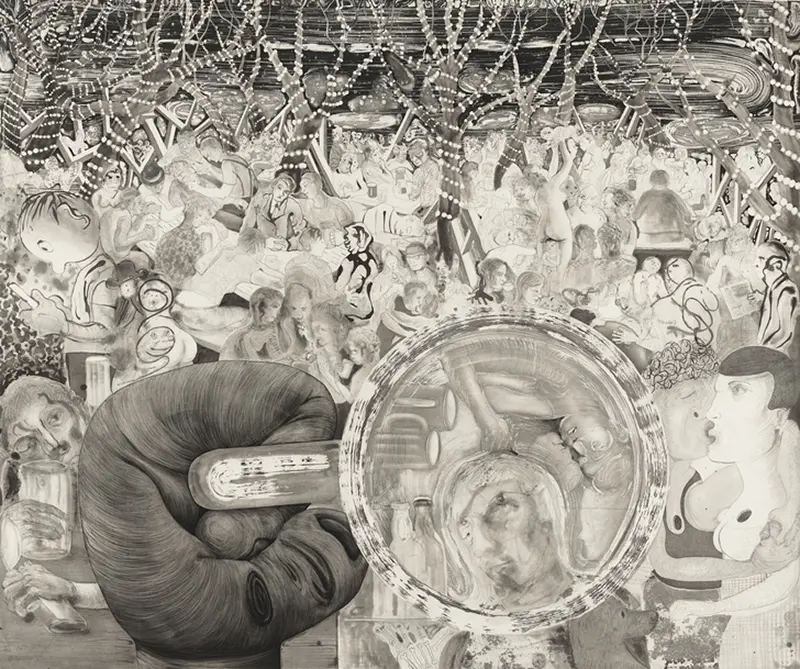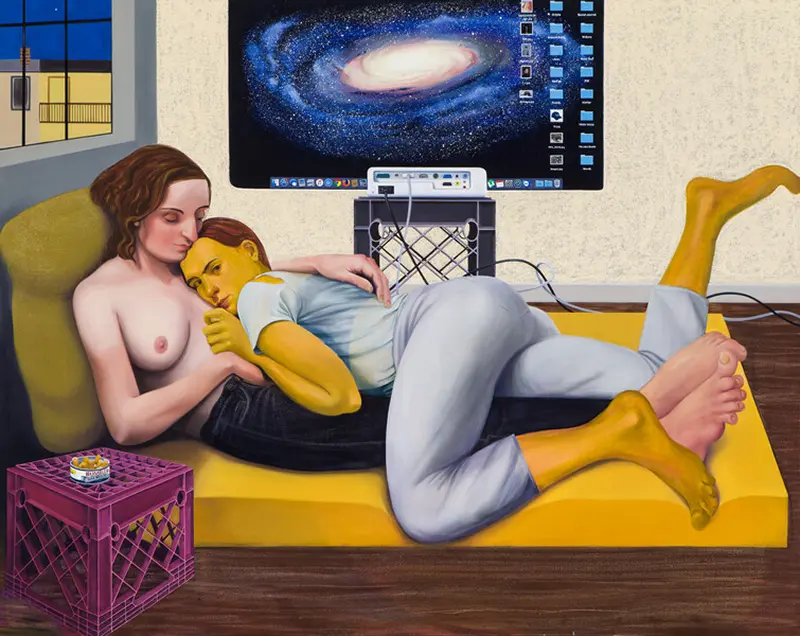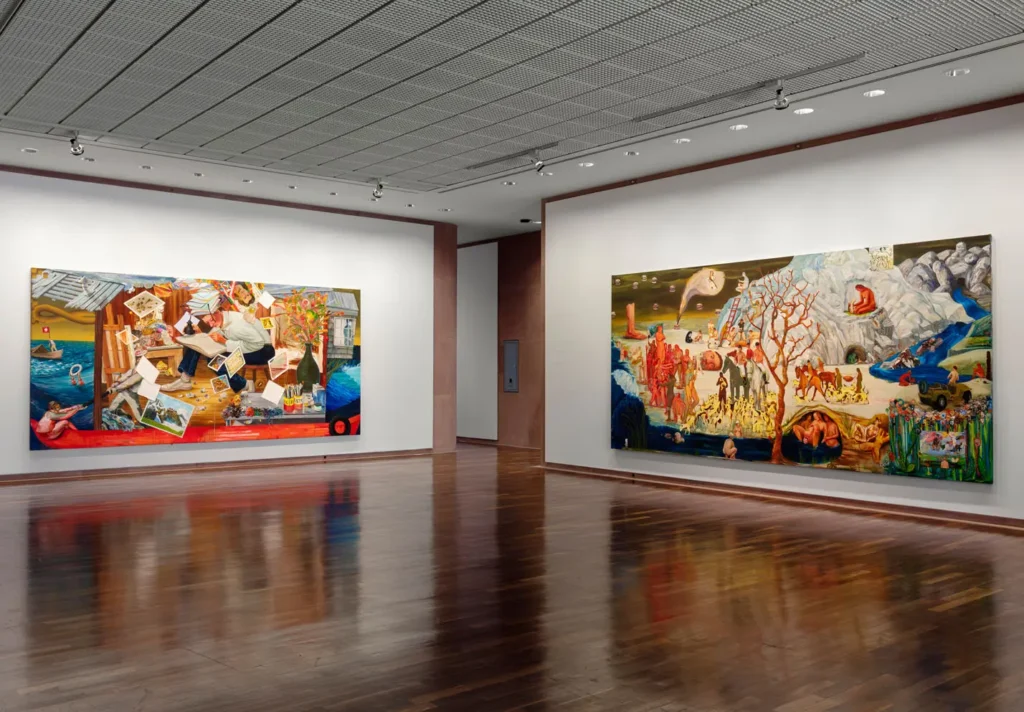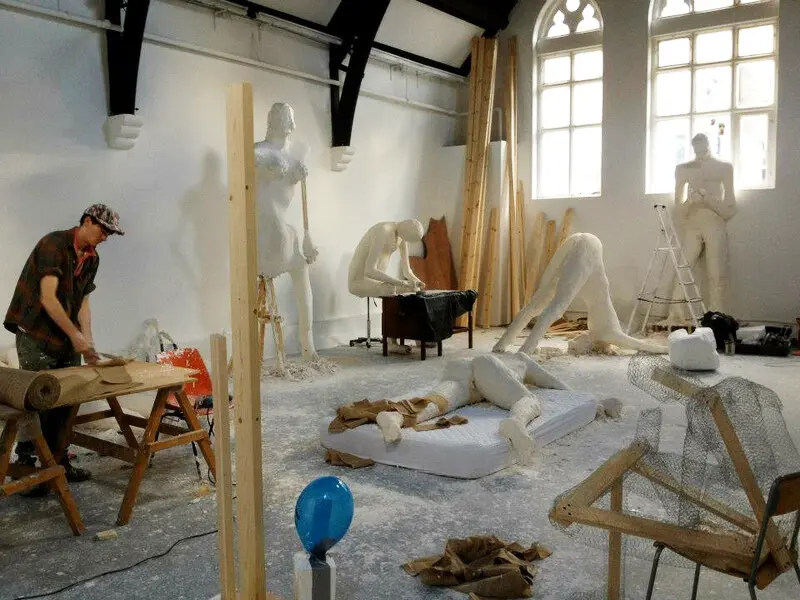Nicole Eisenman, also known as the “bad girl” for her emotionally charged narrative paintings, serves as a reminder of what is possible if one is brave and outspoken, in tune with their identity. The viewer can expect to observe humor, irony, and social insight in abundance from poignant stories in her artwork.
Nicole Eisenman’s work is characterized by defiant, socially critical themes that are presented with comedy and familiar aspects from pop culture and art history, all in a wide spectrum of hues. With heaps of writhing bodies and more, nothing is too gory, outrageous, trashy, vulgar, or too hard to try for Eisenman. Eisenman’s trajectory intertwines personal experiences, cultural observations, and an unyielding commitment to leaving her impact on the contemporary art world.

Eisenman's Early Influences and Trajectory
Born on April 25, 1965, in Verdun, France, to American parents, the wide variety of subjects and forms that would characterize her subsequent work was greatly influenced by the eclectic mix of European and American cultural influences of her upbringing.
Nicole Eisenman was admitted to the Rhode Island School of Design (RISD) to further her interest in art. She spent a year in Rome, where she became acquainted with Renaissance painting and incorporated elements of that period into her work.

Following her graduation in 1987, she moved to New York, finding a climate tinged with the AIDS Pandemic and culture wars. The reignited appreciation for figurative expressionism combined with the political climate stimulated her challenging sexism and mainstream culture. Through her paintings, collages, and sketches, which were laced with overt politics and humor, Eisenman explored the juxtaposition of dominant women and submissive men.
Eisenman’s complex narratives consistently use the human figure—alone or in a mass—to arouse emotions of unease, terror, and loneliness. In 1995, she had her explosive moment when her painting “Self Portrait with Exploded Whitney” (1995) garnered public acclaim. The painting showed men running from the scene captured with fearful expressions while the artist painted on a single wall among the wreckage of a fallen Breuer building, playing into breaking the traditional gender norms in society.

Exploration of Eisenman's Style and Medium
A wide range of mediums and styles are being explored in Eisenman’s work, which frequently takes direct inspiration from art history. She expands on the concept of social realism and pays homage to the Italian glazing methods from the Renaissance while preserving the graphic elements of pop artists like Tom Wesselmann.
Eisenman usually depicts figures in groups or alone in her two-dimensional paintings. Her renderings of subjects are through vibrant colors such as white, yellow, blue, brown, or red.

For example, “Biergarten at Night (2007)”, converts French impressionist cafés into vibrant Brooklyn social settings, brimming with LGBTQ+ personas, hipsters, and even otherworldly personalities. This work is a combination of humor and a reflection of isolation despite the bustling social atmosphere.
The vivid paintings are the result of her mastery of oil painting. In addition to painting, Eisenman is well-known for her experiments with sculpture, printing, and drawing. Her diverse methods showcase not only her flexibility but also her eagerness to challenge the conventional norms of creative processes.
Eisenman also incorporates components from found materials and everyday objects into her works, employing assemblage and collage methods. This approach imparts a sense of immediacy and modern relevance to her compositions.

Shift in Focus
While retaining her portrayal of politics and feminism through dark humor, Eisenman started to exhibit what was within: her identity. Being openly queer, Eisenman’s art progressively explored LGBTQ+ themes and tales. Her paintings evolved into a forum for examining questions of sexuality, identity, and the queer experience, helping to expand the dialogue among the LGBTQ+ art community.
Despite her initial works continuously featuring political innuendos, her more recent works encompass more explicit political commentary. Whether addressing the changing landscape of gender roles, societal expectations, or political upheavals, her art becomes a reflective mirror of the world around her.

A paradigm to this mirror effect can be found in “The Drawing Class (2011)”, where the subjects carefully study a nude model embodying disfigured features, which reveals itself to be a female because of the stretch marks. The piece reflects shame is created when an individual is looked upon, exposing their flaws and insecurities.
Exhibitions and Awards
After “Self-Portrait with Exploded Whitney” became popular in 1995, Eisenman was granted a Guggenheim Fellowship in 1996. Her popularity was further pronounced when she was awarded a MacArthur Fellowship in 2015. Eisenman also participated in the 2019 edition of the Venice Biennale, cementing her reputation in the global art community.

The artist has launched several traveling exhibitions such as Köpfe, Küsse, Kämpfe. Nicole Eisenman und die Modernen in locations varying from Kunstmuseum Den Haag, Kunsthalle Bielefeld, and Fondation Vincent van Gogh Arles.
Her recent solo exhibition at the Museum Brandhorst, titled Nicole Eisenman: What Happened, brought together the artist’s thirty years of painting and sculpture, comprising around one hundred pieces from 1992 to the present.
The artist is the co-founder of the Ridykeulous project. The curatorial initiative supports gay and feminist art shows, with the most recent one held in Nottingham Contemporary’s spaces in 2024, with Ridykes: Cavern of Fine Inverted Wines and Deviant Videos.
An upcoming solo exhibition of Eisenman will be showcased at the Museum of Contemporary Art Chicago through September 22, 2024.

Eisenman: A Luminary of Figurative Expression
Eisenman’s prolific vision reflects a genuine engagement with the intricacies of the human experience, from her early experiments with figurative expressionism to the intricate narratives that characterize her most recent works.
While Eisenman’s work could continue to evolve in appearance, the goal of her imaginative practice has remained constant: to contradict the most profound sentiments within approachable messages of work, to openly call out injustice and persecution while retaining the tiniest flicker of optimism regarding the unpredictable future.



